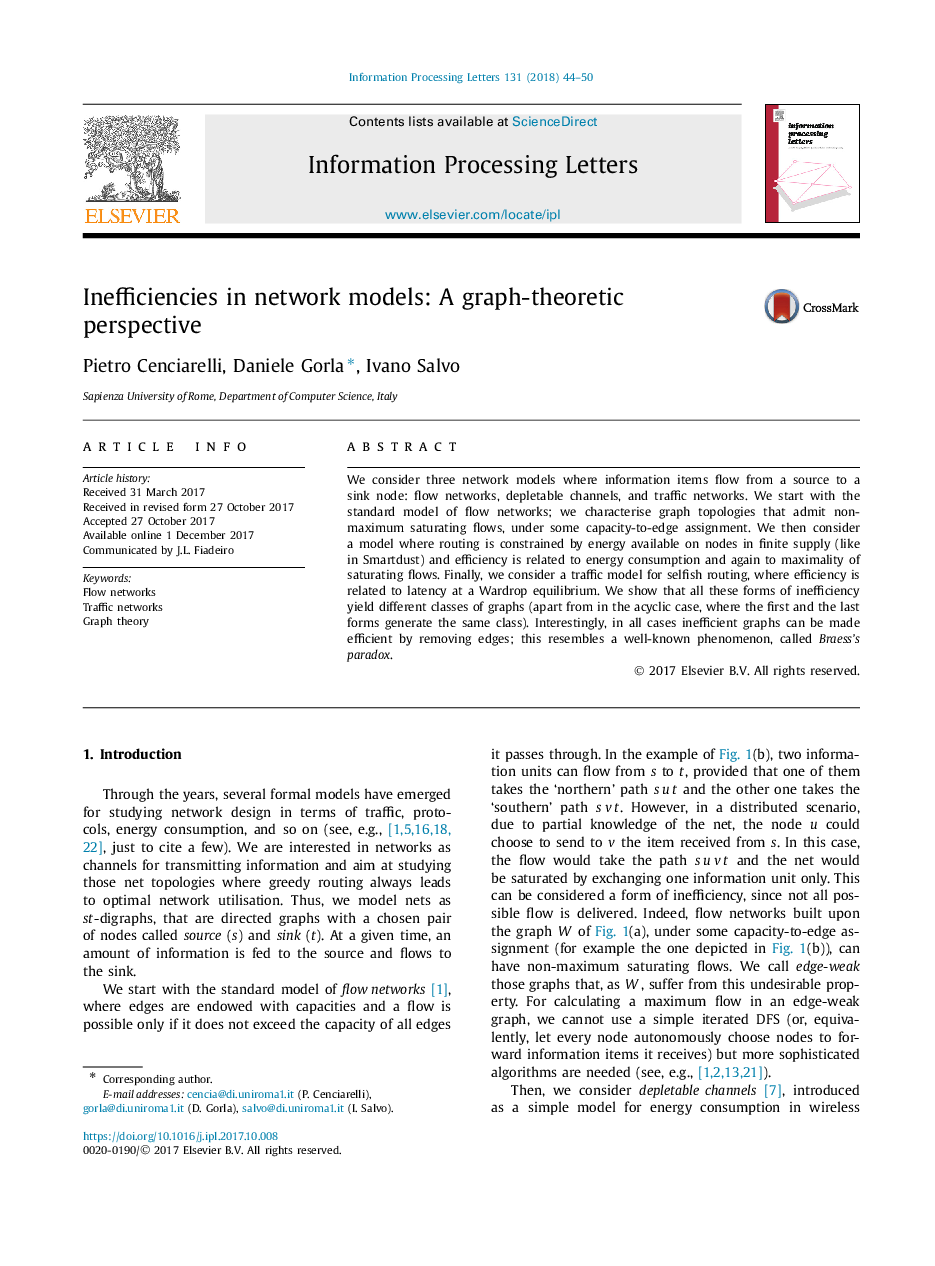| Article ID | Journal | Published Year | Pages | File Type |
|---|---|---|---|---|
| 6874240 | Information Processing Letters | 2018 | 7 Pages |
Abstract
We consider three network models where information items flow from a source to a sink node: flow networks, depletable channels, and traffic networks. We start with the standard model of flow networks; we characterise graph topologies that admit non-maximum saturating flows, under some capacity-to-edge assignment. We then consider a model where routing is constrained by energy available on nodes in finite supply (like in Smartdust) and efficiency is related to energy consumption and again to maximality of saturating flows. Finally, we consider a traffic model for selfish routing, where efficiency is related to latency at a Wardrop equilibrium. We show that all these forms of inefficiency yield different classes of graphs (apart from in the acyclic case, where the first and the last forms generate the same class). Interestingly, in all cases inefficient graphs can be made efficient by removing edges; this resembles a well-known phenomenon, called Braess's paradox.
Related Topics
Physical Sciences and Engineering
Computer Science
Computational Theory and Mathematics
Authors
Pietro Cenciarelli, Daniele Gorla, Ivano Salvo,
